Mahmoud Hamadani: art, life, and minimalism - what Rumi refers to as “that which cannot be found”
- Oct 5, 2014
- 3 min read
Updated: Nov 28, 2024
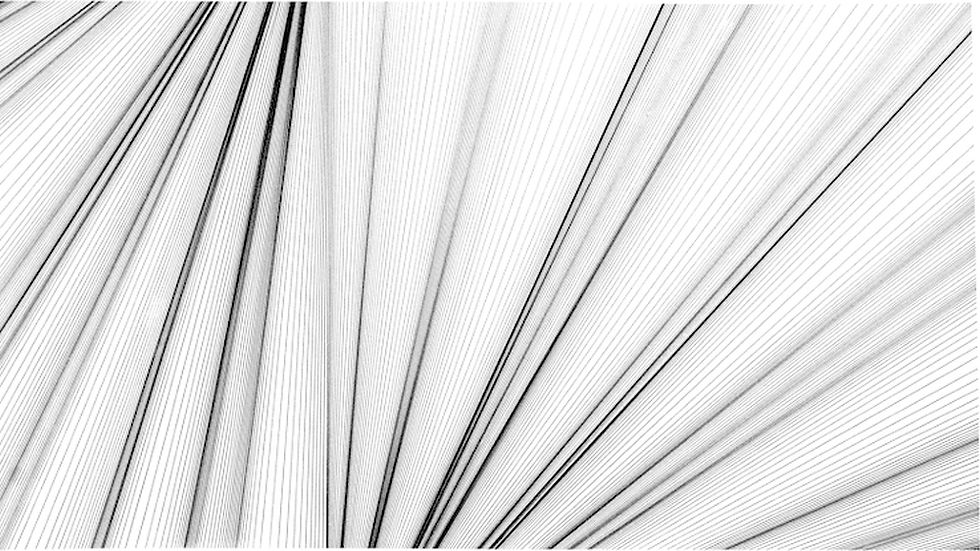
In his early career, Mahmoud Hamadani worked in the field of mathematics and was a political advisor with the United Nations in Afghanistan. His minimalist abstract art is in pursuit of understanding order and chaos, what happens to people, and what Rumi refers to as “that which cannot be found.”
Mahmoud Hamadani, who was born in Rasht, Iran in 1958 and currently lives and works in New York, arrived at his artistic career rather late in life. After earning his undergraduate degree in mathematics at the State University of New York, he worked in a related field for several years before pursuing a master’s in public administration from the John F. Kennedy School of Government at Harvard University. This lead to a position as a political advisor with the United Nations in Afghanistan, a career he has since sidelined.
Hamadani has been exhibiting his art since 1999, gaining recognition for minimalist work that is a beautiful fusion of natural occurrences, chance, environments, and visual narratives. There is a meditative and visual rhythm in his mostly black and white forms, that draws inspiration from the numerical Fibonacci sequence, ancient Persian poetry and traditional Chinese painting.
In the artist’s own words, his work illustrates the principle of “doing as much as possible and as little as necessary,” finding a graceful balance of line and negative space.
ARTWORKS
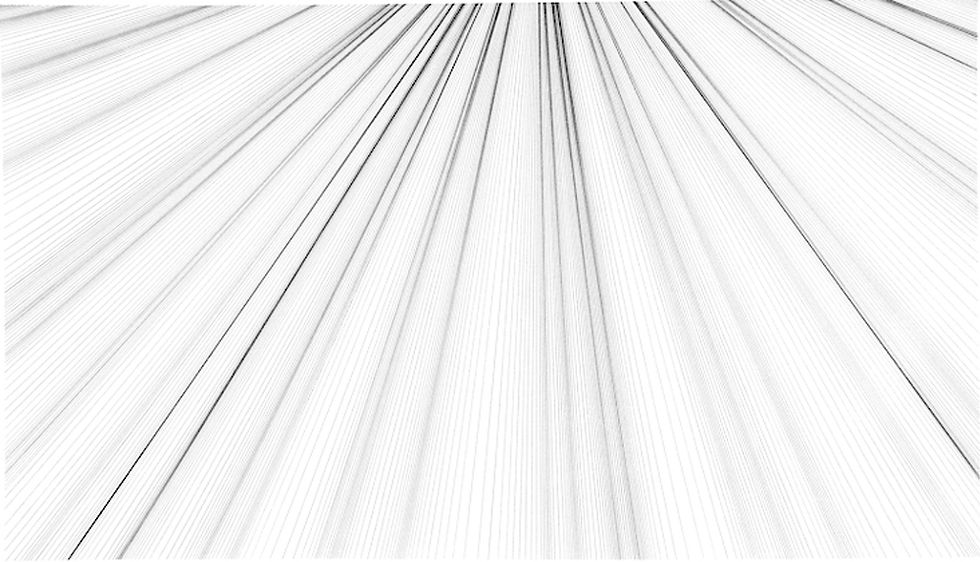
From the Odes series – Untitled, 2006, Ink on Paper, 25″ X 41″ [Featured artwork top of page: Untitled, 2007, Ink on Paper, 25″ X 41″; Thumbnail – Untitled, 2007, Ink on Paper, 18″ X 30″]
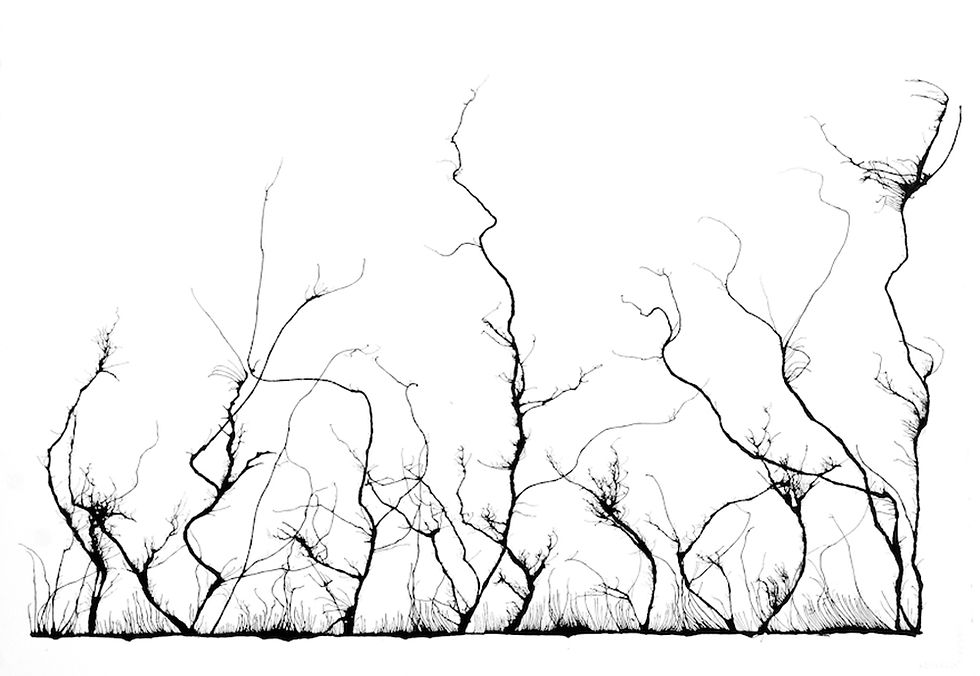
From the Traces series – Untitled, 2000, Ink on Paper, 22″ X 30″ Created by blowing ink on paper
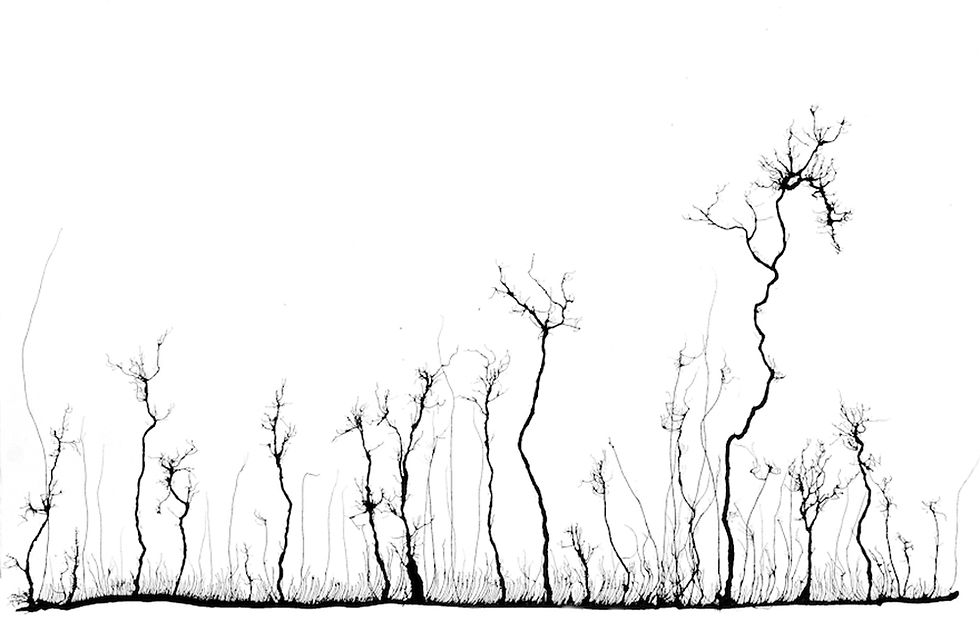
From the Traces series – Untitled, 2005, Ink on Paper, 25″ X 41″ .
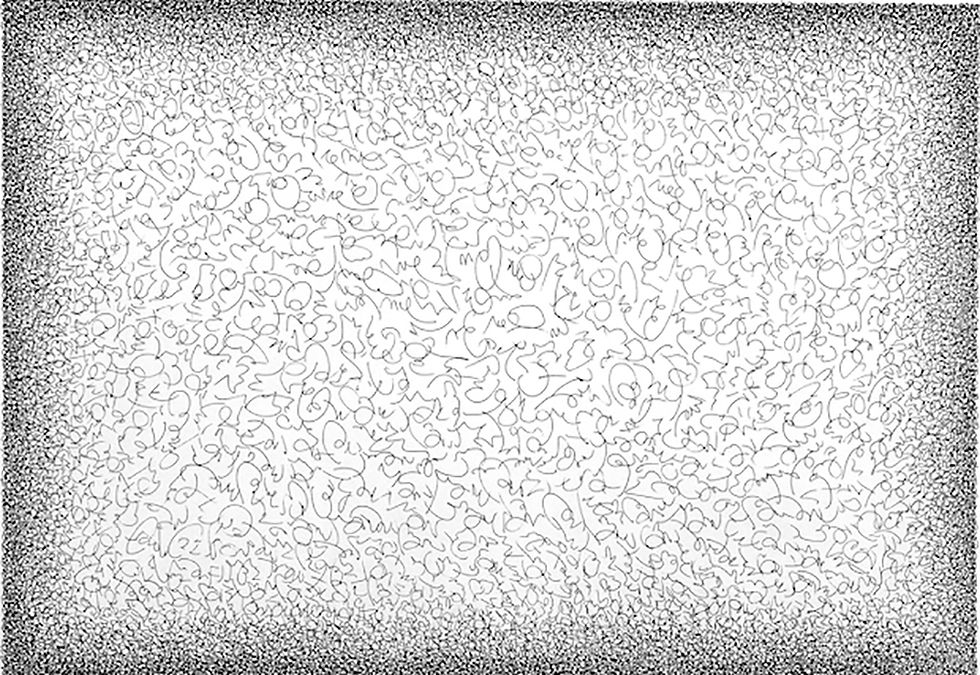
From the Requiem series – Requiem for Kabul, 2000, Limited Edition Print, 22″ X 30″
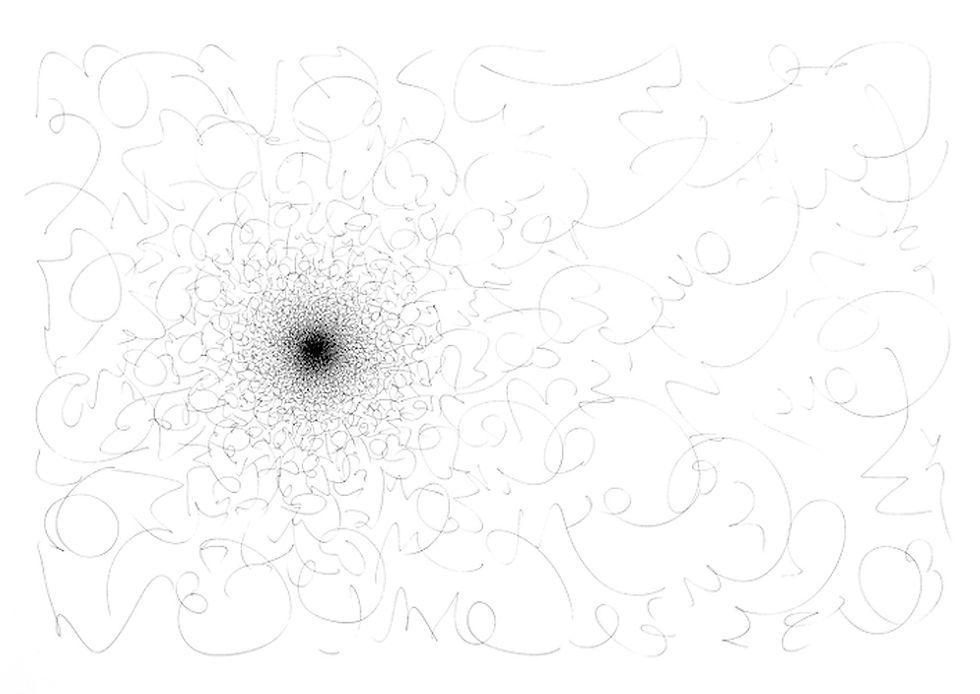
From the Requiem series – Untitled, 2003, Ink on Paper, 22″ X 30″

From the Endless Roads series:
MH: Endless Roads is autobiographical. I came to art relatively late in life after having worked in disparate and seemingly unrelated fields for two decades. Not unlike my own search, the process of creating these drawings is akin to searching for an image as opposed to producing something preconceived.
Endless Roads is a visual narration of a perpetual search. It is a mapping of the unending and abstract nature of pursuit of beauty and meaning – What Borges intimates as “the human game of nights and days,” and Rumi refers to as the “search for that which cannot be found.”
The inspiration for the series is best captured by the following stanza from the poem The Untimely Traveler by Azadeh Farahmand:
I am the last child;
in search of the origins of my belatedness
forever searching
all corners of desire
and the endless roads
of wonder…
MAHMOUD HAMADANI
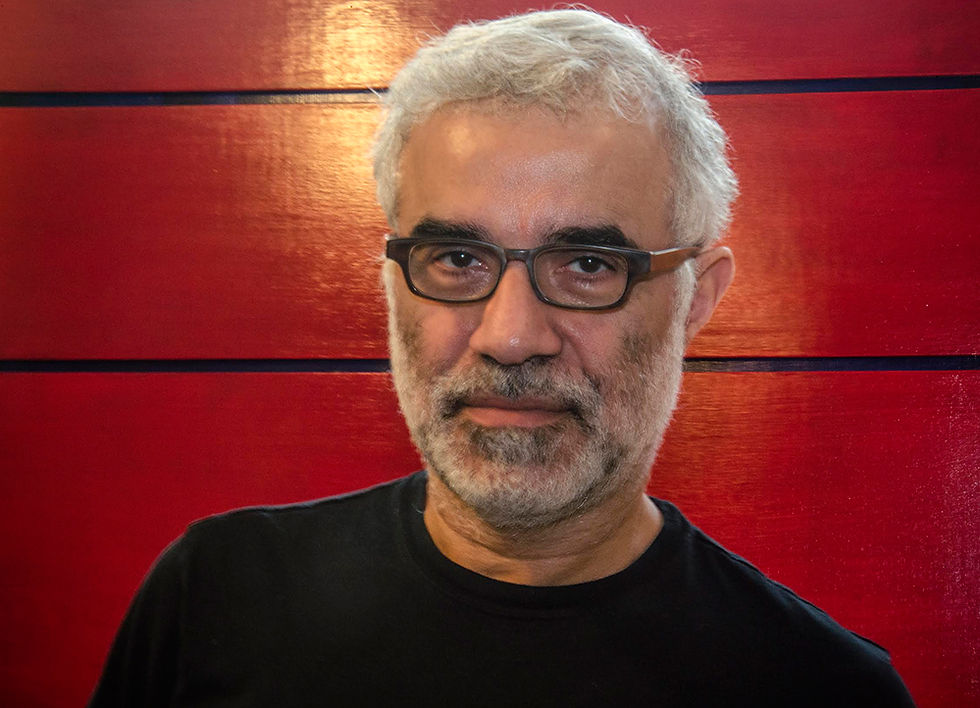
“The most interesting things happen in the periphery. And when one explores the periphery one risks falling off. Being an artist and yearning for a balanced life is like being a cautious gymnast who doesn’t move lest she falls and breaks a wrist. There is great joy in the “imbalanced” life of an artist. And if one falls, it’s part of the opportunity cost. My recommendation: Don’t seek balance. Seek meaningful excitement.”
“The whole point of being an artist is to be free. An artist should not have limits,” Hamadani said. “My main challenge in drawing is not to interfere with what pours out of me. It doesn’t take long to do a painting. However, to be an artist takes a lifetime. My inspiration is all things mundane, in the words of Anna Akhmatova …”
I have no use for odic legions, Or for the charm of elegiac play For me, all verse should be off kilter Not the usual way.
If only you knew what trash gives rise To verse, without a tinge of shame, Like bright dandelions by a fence, Like burdock and like cocklebur.
An angry shout, the bracing smell of tar, Mysterious mildew on the wall… And out comes a poem, light-hearted, tender, To your delight and mine.
January 21, 1940
__________________________
Gallery and museum exhibitions, grant and residency programs:
Alwan Center for the Arts, New York De Buck Gallery, New York XVA Gallery, Dubai, United Arab Emirates Michael Steinberg Fine Art, New York New Museum of Contemporary Art, New York British Museum, London, also included in the permanent collection 7 Bedford Row, London Pollock-Krasner Foundation grant Ucross Foundation Residency Program, Wyoming Santa Fe Art Institute Artist Residency, New Mexico